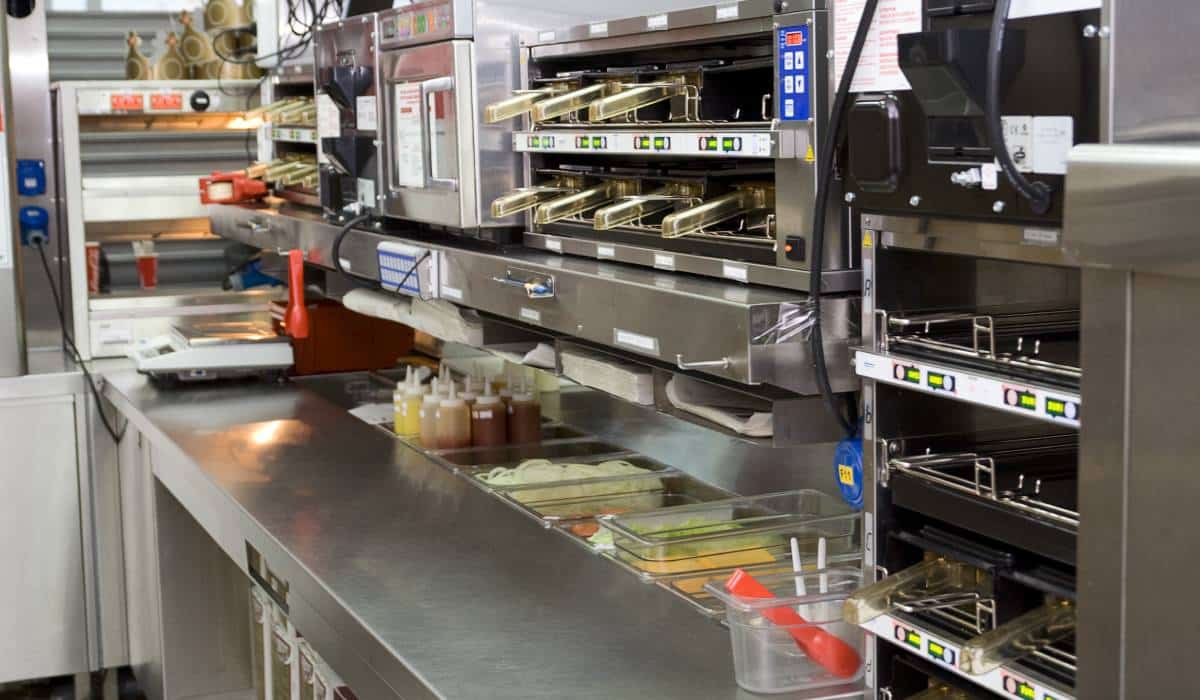Consumers now expect greater convenience from their fast-food experiences, from more ways to order and collect their food to how and what they eat. This reinvention of the consumer journey is bringing a new world of thinking for quick-service restaurants and fast-food operators.
Any quick-serve or fast-casual restaurant must now juggle orders placed via multiple channels—from in-store dining, drive-thru touch screens, counter service, click and collect, and delivery orders from multiple providers such as Postmates, GrubHub, and DoorDash.
Greater ordering channel options continue to drive even higher consumer expectations. This is forcing restaurant operators to rethink their kitchens, front-of-house spaces, and overall restaurant operations. Many restaurants are investing in newer, smarter technologies, including integrated EPOS [electronic point of sale], KMS [kitchen management systems], and channel aggregation software to help them ensure they continue to deliver the experience that their customers want and are able to run the operation smoothly and efficiently.
Kitchens are Getting Smarter
Walk into a kitchen today and it is very different to the analogue environments of yesteryear. You’ll see smarter kitchen devices, from ovens with programmable cooking cycles and combination cooking modes, to fryers that automatically filter the oil or adjust their cooking temperature to match the thermal impact of the food being cooked, to machine vision systems that are helping to predict quality and working patterns.
In time, automation and robotics will become a more common sight in kitchens as well. AI-enabled robotics will work alongside people, relieving them from some of the boring and mundane jobs they hate.
But it’s not just kitchen equipment and sales channels that are getting more intelligent. Smart inventory management and capacity projection use data to help to satisfy demand while at the same time generating less waste.
In an ideal world, a modern restaurant would have all these systems working harmoniously together, helping to manage operations, easing the work pressures on employees and providing valuable and real-time data for management.
Sadly, this is not yet happening as many of these technologies, built by different companies, can’t “talk” to each other.
The key to successful modern kitchens is going to be interoperability between these independent systems.
Harmonious Kitchen Operations
At Karakuri we believe that interoperability is key to a wider ecosystem of change in the modern fast-food restaurant and kitchen, and we are working to make that interoperability part of our systems from day one.
The most recent EPOS and ordering systems are now starting to offer the capability to collaborate with other third party systems—but it’s early days and this still isn’t typically easy or efficient.
As automation enters the mainstream it represents an even bigger issue than the EPOS/KMS and stock control management we’ve seen thus far.
Many individual robotics systems are likely to operate within a kitchen—from the makeline to the fryline to off premises packing—each needs to be able to seamlessly communicate with each other and the other system in the restaurant, to ensure that the kitchen delivers high-quality food, consistently and at maximum efficiency.
In the emerging world of kitchen automation, a few companies have attempted to build bespoke, robotic solutions with their own proprietary interfaces or control solutions.. However, these one time, bespoke solutions aren’t a viable option for the wider mass market..
For new kitchen solutions to be widely adopted they must fit into already established, multi-channel food environments and pre-existing technologies.
This is why interoperability is key.
We’ve seen interoperability drive success in other industries. Programs like Amazon’s Works with Alexa or Apple’s Home Play are recognisable badges that indicate that a product will work in our homes with devices we already own. It should be the same for our kitchens.
Interoperability is on the minds of everyone who has an eye on the future of foodservice. It’s a conundrum today. However, we aren’t too far away from seeing every appliance in the kitchen working together and delivering on these benefits. The technology is ready. Now, it will take all the parties in the kitchen ecosystem to make it work.
Barney Wragg is the founder and CEO of Karakuri, the world’s leading provider of smart kitchen systems including the latest addition Fryr (the high precision automated chip fryer).













